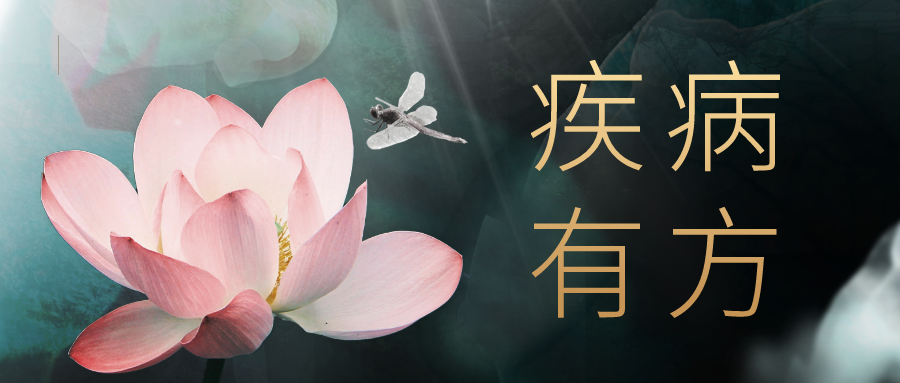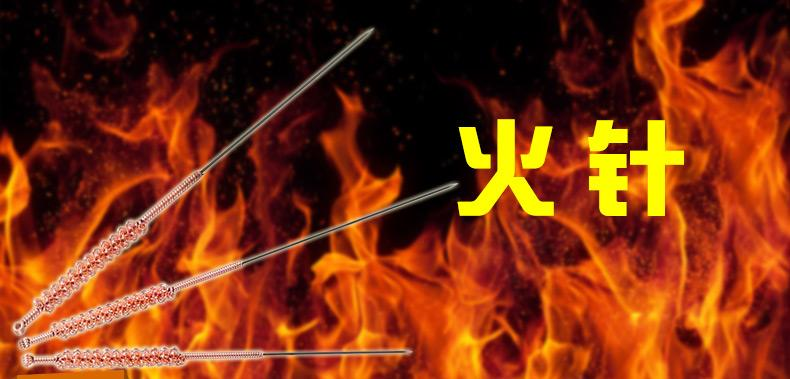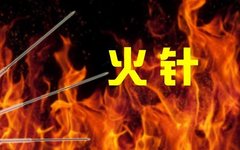This public account is hosted by Yunnan Provincial Administration of Traditional Chinese Medicine. If you have not followed yet, please click the blue “Yunnan TCM” above to follow.

There is a saying, “to draw fire to oneself,” which metaphorically means to seek one’s own suffering or even demise. However, the fire needle therapy in Traditional Chinese Medicine (TCM) has become a unique treatment that allows for rebirth. The earliest recorded reference to fire needle therapy is found in the Huangdi Neijing, which has a history of thousands of years in China. With the clinical applications and research by physicians throughout the ages, it has continuously developed and improved, becoming a unique medical system within acupuncture therapy.

Fire needle therapy involves rapidly inserting a needle that has been heated to red-hot into acupuncture points to treat diseases. It has advantages such as ease of operation, minimal side effects, low cost, significant efficacy, and wide applicability. The use of fire needles can evoke both love and fear, as their effectiveness is notable and embraced by both practitioners and patients; however, the noticeable pain during treatment can deter many patients.
Mechanism and Efficacy of Fire Needles
1. Expelling Pathogenic Factors and Alleviating Itching
Wind is known for its ability to move and change frequently, often manifesting as itching, which is a common symptom in many skin diseases. The Jin’gang Zhenjiu states, “Fire needles open the acupuncture points widely, not blocking the entrance, allowing the wind pathogen to exit,” meaning that fire needles open the door to expel pathogens, providing an exit for them.
2. Clearing Heat and Discharging Pus, Generating Flesh and Closing Sores, Clearing Heat and Dissolving Masses, Promoting Qi and Blood Circulation
The Li Lun states, “Heat syndromes can use heat; one can use heat to promote movement, and heat can also draw out heat, which is the method of treatment.” Recent clinical studies on fire needles have proven that they can accelerate blood circulation, enhance local tissue metabolism and nutrition, promote the resolution and absorption of inflammation, and achieve the effects of generating flesh and discharging pus, as well as dissipating blood stasis and reducing swelling.
3. Expelling Cold and Dampness, Warming and Unblocking Meridians
The Honglu Diansue states, “For all conditions of deficiency and excess, cold and heat, light and heavy, near and far, fire can disperse cold diseases, just as the scorching sun melts ice, meaning that cold is resolved by warmth.” Fire needles possess the effects of both acupuncture and moxibustion, utilizing the power of fire to enhance the yang heat effect of meridian qi, relaxing the meridians, harmonizing qi and blood, ultimately achieving the goals of treating and preventing diseases.
Fire Needle Therapy for Skin Diseases
1. Eczema, Neurodermatitis, and Other Itchy Skin Diseases
Itching is one of the main symptoms of many skin diseases and systemic diseases, severely affecting the quality of life of patients and often causing them great distress. Fire needles can stimulate local blood vessel dilation through thermal stimulation, improve blood circulation, promote inflammation resolution, skin repair, prevent scar formation, and alleviate itching, thus controlling the recurrence of lesions. Additionally, long-term scratching can lead to lichenification, making it difficult for topical medications to penetrate. After fire needle treatment, topical medications can penetrate through the needle holes created by the fire needles, enhancing drug absorption and achieving the effects of suppressing itching and eliminating skin lesions.
2. Herpes Zoster
Fire needle therapy in the early stages of herpes zoster can expel pathogens, providing an exit for them, leading to the resolution of rashes and shortening the course of the disease. Additionally, some patients may experience postherpetic neuralgia after the complete resolution of skin lesions, with an incidence rate as high as 50% to 75% in patients over 60 years old. Fire needles can harmonize qi and blood, unblock meridians, and alleviate pain.
3. Acne, Boils, and Abscesses
Fire needles can disperse masses, close sores, discharge pus, and have effects of clearing heat, expelling dampness, and unblocking meridians. Recent clinical studies on fire needles have proven that they can accelerate blood circulation, enhance local tissue metabolism and nutrition, promote the resolution and absorption of inflammation, and achieve the effects of generating flesh and discharging pus, as well as dissipating blood stasis and reducing swelling. The application of fire needles directly targets the lesions, using heat to draw out heat and expel pathogens. The treatment of heat-type skin diseases is short in duration, has minimal side effects, and effectively prevents and controls new and recurrent cases.
4. Vitiligo
Vitiligo is a primary, localized, or generalized skin and mucosal pigment loss disorder. Through fire needle therapy, the body’s yang energy is invigorated, the functions of the internal organs are regulated, the meridians are relaxed, qi and blood are harmonized, and the necessary nutrients are enhanced to the skin lesions, accelerating melanin production, which can effectively treat vitiligo.
Contraindications for Fire Needle Therapy
1. Pregnant women and the elderly or weak individuals should not use it.
2. Those who faint at the sight of needles should avoid it.
3. Patients with hypertension, heart disease, malignant tumors, etc., should use it with caution.
Precautions
1. Fire needle instruments must be standardized
Fire needle instruments are made from various materials, and many practitioners use self-made fire needles from steel wires or iron wires, which can make it difficult to ensure the efficacy and safety of fire needle therapy. It is essential to pay attention to the standardization of the instruments used in fire needle therapy.
2. Alleviating the Pain of Fire Needle Treatment
While improving the operational skills of medical personnel to enhance efficacy and safety, it is also important to minimize the fear and pain caused to patients by fire needle treatment. Improving the quality and thickness of fire needle instruments can alleviate patient discomfort; for facial treatments, finer fire needles or needles derived from fire needles are often used, while for limbs and areas with more muscular tissue, medium-thick fire needles are generally preferred.
3. Appropriate Needle Insertion Depth
The Zhenjiu Dacheng states, “Avoid inserting too deeply, as it may injure the meridians; too shallow cannot treat the disease; one must find the middle ground.” Therefore, fire needle insertion should primarily be direct to ensure the appropriate depth of insertion.
In summary, fire needle therapy has undergone thousands of years of accumulation from ancient times to the present, forming a distinct characteristic and demonstrating clear efficacy. With the advancement of the times and rapid progress in science and technology, we must not only inherit the experiences of ancient fire needle therapy but also utilize modern scientific technology to develop it further, endowing it with new connotations, making this ancient and unique acupuncture therapy more adaptable to societal development and human health needs.
Author Profile

Ma Ying: Physician in the Dermatology and Venereology Department of Kaiyuan People’s Hospital, with a master’s degree, graduated from Yunnan University of Traditional Chinese Medicine, specializing in the prevention and treatment of skin diseases.
Specializes in: Integrative diagnosis and treatment of pigmentary skin diseases, acne, allergic skin diseases, and psoriatic skin diseases.

Na Meng: Director of the Dermatology and Venereology Department of Kaiyuan People’s Hospital, concurrently serving as a member and standing committee member of the Dermatology Branch of the Chinese Association of Traditional Chinese Medicine, and a member of the Integrative Medicine Committee of the Dermatology Physician Branch of the Chinese Medical Doctor Association, as well as a standing committee member of the Dermatology and Venereology Branch of the Yunnan Medical Association. In 2019, he was awarded the title of “First Medical Discipline Leader of Honghe Prefecture” by the Honghe Medical Association and the title of “Industry Elite – Famous Doctor” in Kaiyuan City.
Specializes in: Difficult skin diseases, sexually transmitted diseases, and disfiguring skin diseases, with rich experience in the diagnosis and treatment of fungal diseases, pigmentary skin diseases, acne, pediatric skin diseases, allergic skin diseases, and psoriatic skin diseases.

Scan to ask me
Editor丨Yang Zhengrui Layout丨Ma Rou


